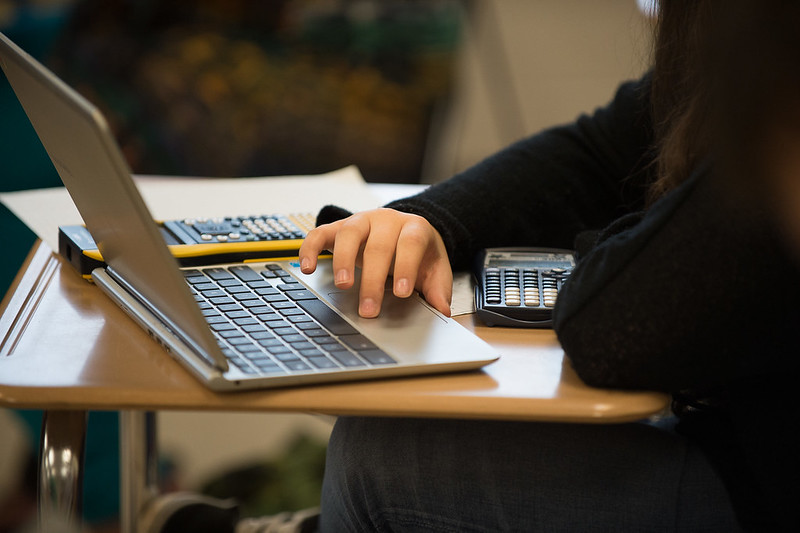
Since reopening schools this fall, districts across Tennessee continue to find innovative ways to implement and refine instructional models that will maximize learning while also keeping students safe and healthy.
Trousdale County Schools reopened with a hybrid-instructional model that requires students to learn in person two days per week and learn at home through asynchronous assignments on the other days. Early into the fall semester, Trousdale leaders and teachers identified student engagement during learn-at-home days as a key area that needed focus. In an effort to increase submissions of asynchronous assignments, Shanesse Fyke, one of the fifth-grade math teachers at Trousdale County Elementary School, and Landon Gulley, the eighth-grade math teacher at Satterfield Middle School, used student survey feedback and suggestions from a student panel to develop strategies.
Fyke is using a flipped classroom approach in which students watch videos introducing math concepts and take notes at home, then work on practice problems during regular classroom instruction. Several planning decisions have been critical to successfully launching this approach.
First, Fyke provided students with a structured note-taking template for capturing essential information from the videos. This template served as a critical scaffold for fifth-grade students who were just beginning to develop their note-taking skills. Second, in-person class time was initially devoted to helping students learn and practice how to watch the videos, pause them at key moments and capture key information on the note-taking template. Third, Fyke continues to leverage high-quality videos from their existing math curriculum, a move that reduces planning time while ensuring concepts are introduced at the right level of rigor.
Early returns on this approach have been positive, with students reporting a better understanding of how to watch and learn from the instructional videos. This approach was also helpful when Trousdale had to suddenly close schools after fall break and pivot to all-virtual learning. The district’s math supervisor, Toby Woodmore, reports that videos and accompanying lessons provided 10 days of instructional continuity for students during this critical time.
Gulley is using peer-led study groups to increase student engagement and understanding of key concepts during learn-at-home days. After placing students in study groups with a range of performance levels, he identified students to serve as leaders for each group. Optional Google Hangout meetings are conducted after regular school hours on select days. While a teacher or administrator pops in to observe and troubleshoot technical issues, the study group leaders facilitate all discussions among their peers. Each session is recorded to help create a safe learning environment and to provide students unable to attend the meeting a chance to watch at a later time.
Like Fyke’s flipped classroom strategy, the peer-led study groups are showing signs of success. Teachers and administrators who have observed the study groups are excited to see students engaged in conversations about math.
“It has been great to sit back and listen to their discussions,” Gulley says. “Just hearing it from me, it does not always stick.”
Most importantly, this approach has the potential to benefit students at all performance levels.
Trousdale is excited to refine and expand the peer-led study groups. While the groups are working well for students who attend them, overall participation could be better. To increase attendance, Gulley plans to survey students again to find optimal times for study groups to meet. He is also collaborating with colleagues to expand the study groups to other core content classes.
As school leaders and teachers work together to find and improve strategies for remote and hybrid learning, the overall goal is to ensure that every student has access to rigorous instruction. By sharing their stories and experiences, we hope to highlight strategies that might be helpful to other districts as we navigate this unusual school year.
Dr. Richard Bailey is SCORE’s director of strategic practice and data.
